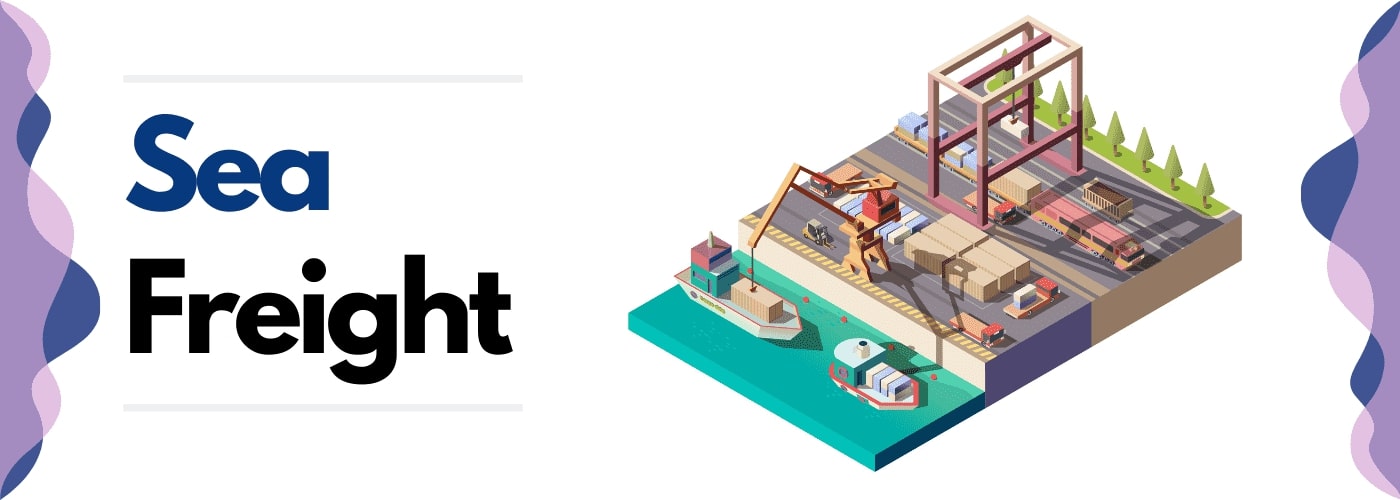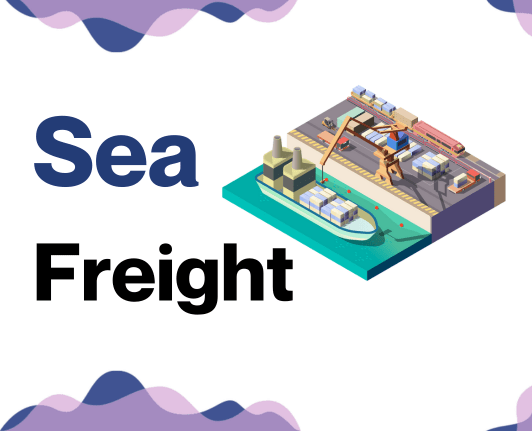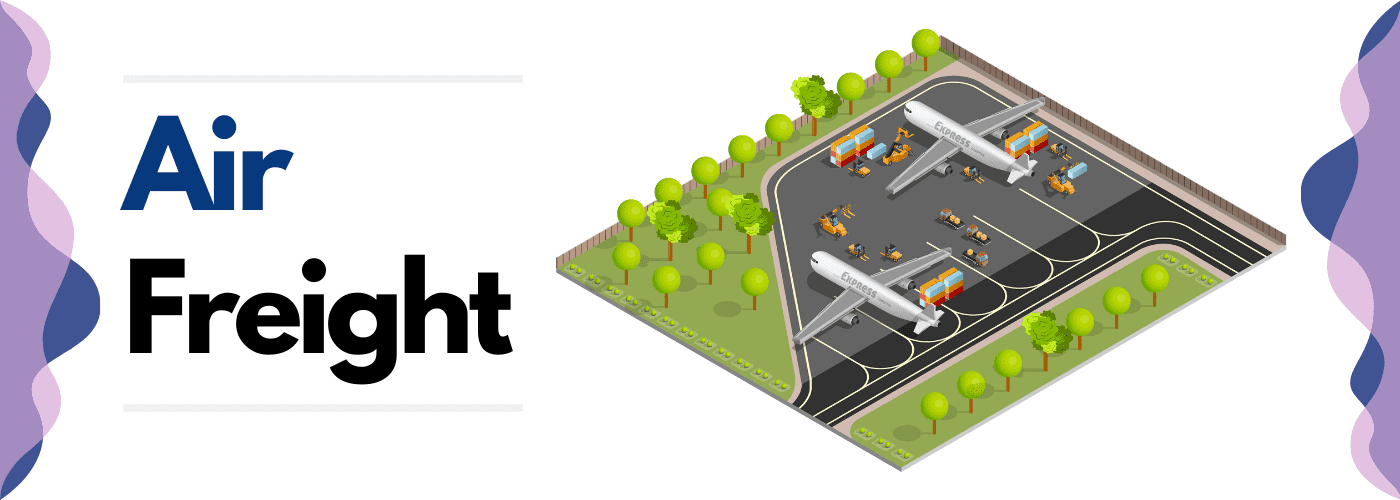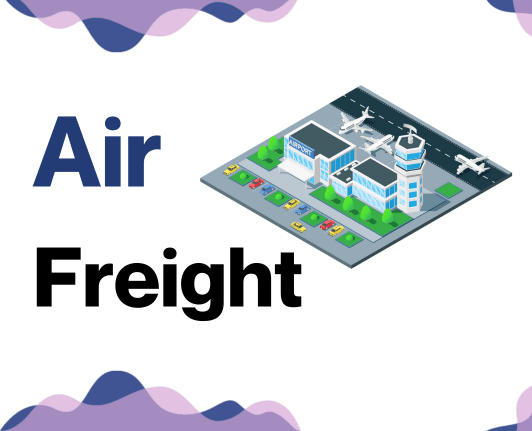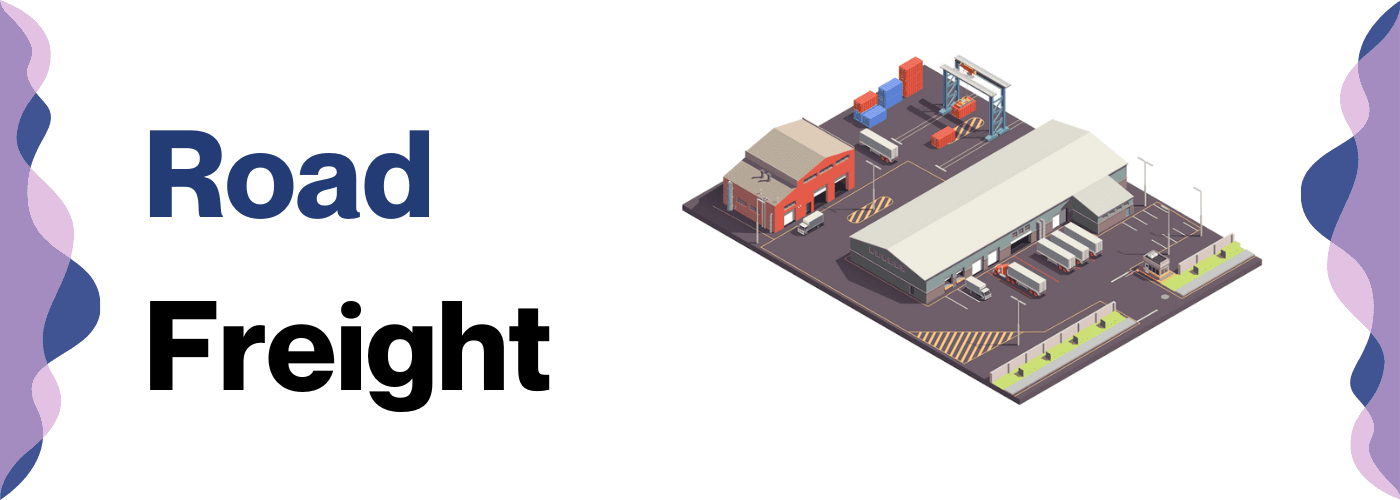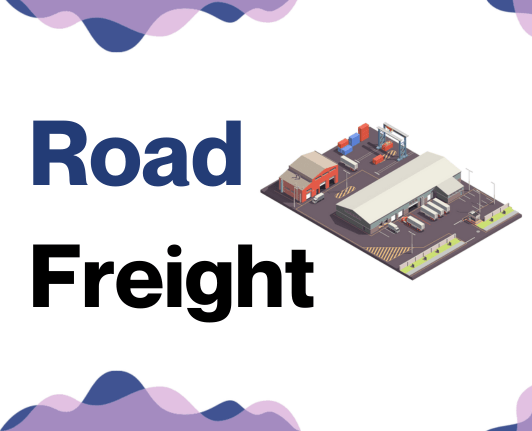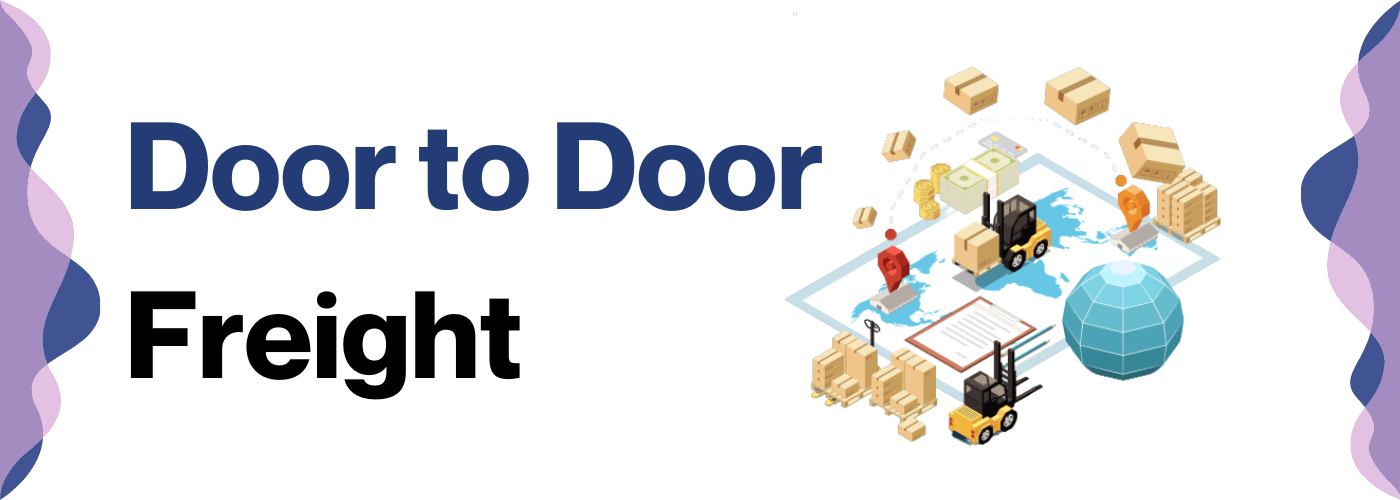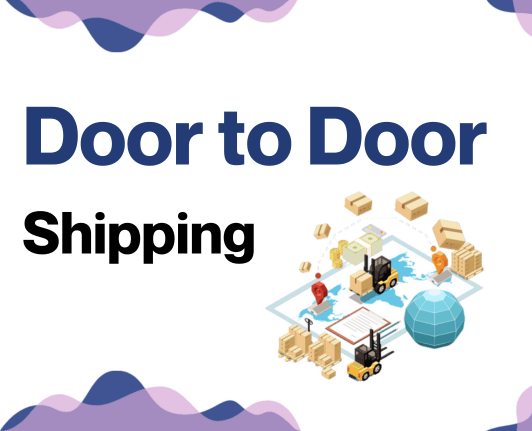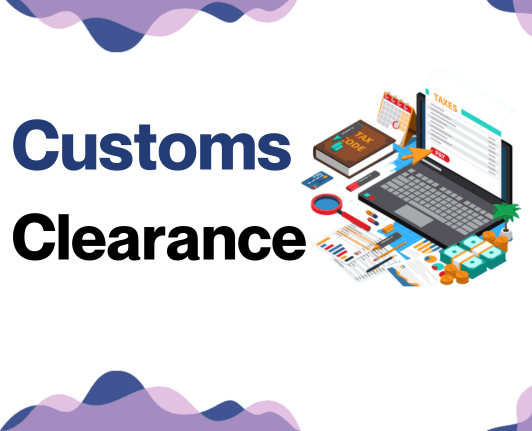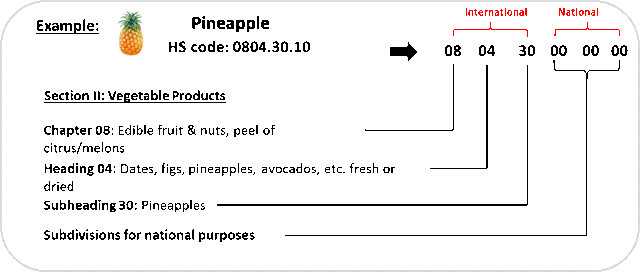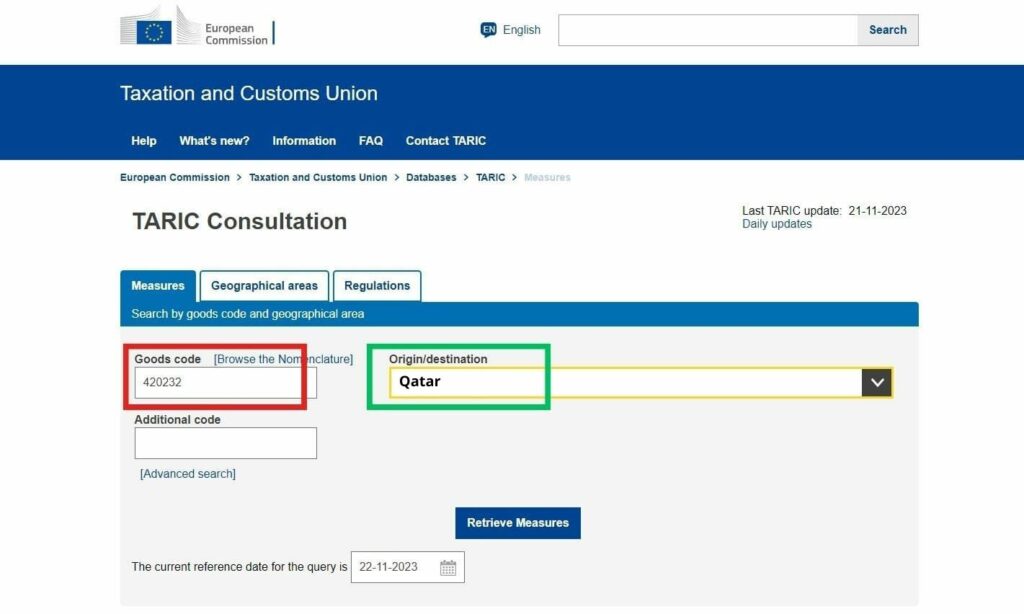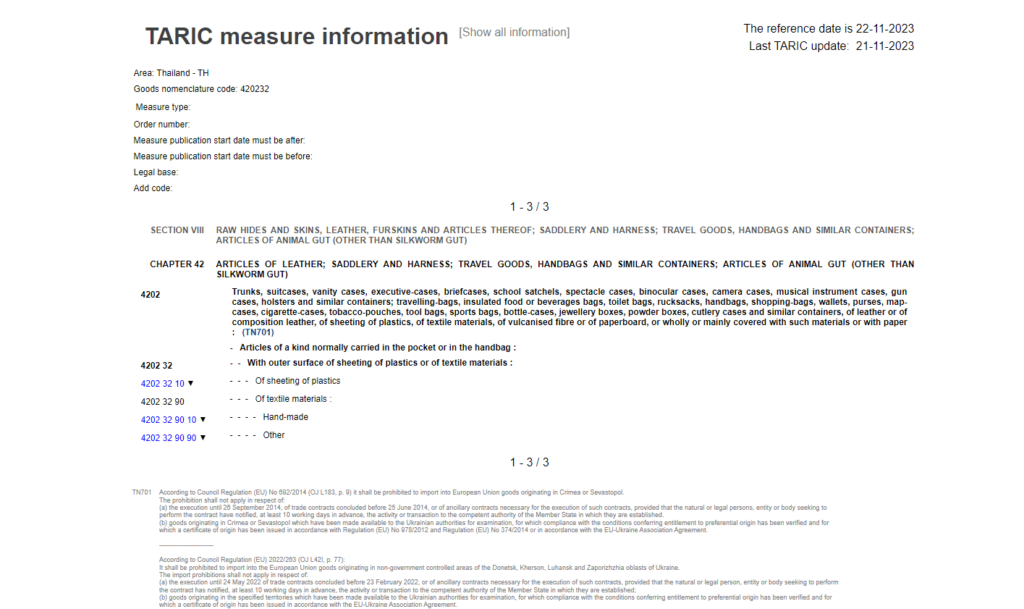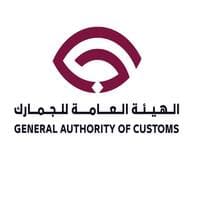Why let logistics dampen your dreams of shipping falafels from Qatar to UAE? The realms of freight transport can seem complicated with concerns around transit times, understanding rates and unravelling customs regulations. This guide will be your compass in this journey, elucidating various types of freight options from air to sea. You'll gain insights into customs clearance, duties, and taxes besides receiving indispensable advice tailored to launch your business into a smoother sailing. If the process still feels overwhelming, let DocShipper handle it for you! Specialising in international freight forwarding, we architect each step of your shipping sequence, turning daunting challenges into seamless success for businesses worldwide.
Table of Contents
Which are the different modes of transportation between Qatar and UAE?
Welcome to the crossroads of the Middle East! Deciding on the appropriate transit channel between Qatar and UAE is a bit like choosing the fastest route to your neighborhood grocery store - it needs to be direct, quick, and efficient. Considering their proximity, road freight emerges as a feasible choice. However, let's not forget sea freight as both countries have well-connected ports. The choice really depends on your cargo type, budget, and urgency. It's about picking the method that best fits your jigsaw puzzle of logistics needs and challenges. Let's embark on this decision-making journey together!
How can DocShipper help?
Facing complexities while shipping goods from Qatar to UAE? Let DocShipper streamline the process. We coordinate transport, handle customs clearance, and manage administrative procedures, so you don't have to. Get a grip on your international freight needs - reach out for a free estimate in under 24 hours, or dial our consultants for a friendly, no-obligation chat.
DocShipper Tip: Sea freight might be the best solution for you if:
- You're dealing with hefty quantities or large-scale goods. Sea freight is your go-to for maximizing space without stretching your budget.
- Your cargo doesn't have an urgent deadline, as sea freight typically has longer transit times compared to air or rail.
- Your shipping routes are between major ports, allowing you to leverage the extensive global network of sea shipping lanes.
Sea freight between Qatar and UAE
Ocean shipping from Qatar to the UAE, two dynamic economies in the Gulf, shines as a beacon of thriving international trade. Harnessing the power of the Persian Gulf, our goods traverse bustling seaports like Doha's Hamad Port and UAE's Jebel Ali. This marine highway, though slower than air or land routes, packs a cost-effective punch for high-volume freight with less squeezing of your budget.
However, it's not always smooth sailing. Amidst the waves of trade documentation, shippers often hit rough waters, struggling with pitfalls from regulatory compliance to documentation errors. Imagine trying to assemble a puzzle without the final picture – that's what it feels like for companies stepping into the labyrinth of cross-border shipping without proper guidance or know-how. Within these pages, we’ll demystify the journey, sharing invaluable best practices and specifications that make the trip a breeze. This guide will be your compass, ensuring your shipping operations between Qatar and UAE keep a steady course. Buckle up, your simplified sea-faring voyage begins here!
Main shipping ports in Qatar
Hamad Port
Location and Volume: Nestled on the southeastern coast of Qatar, Hamad Port serves as the heart of maritime trade in Qatar. Handling over 2 million TEU annually, its strategic position makes it a critical gateway to the Gulf Cooperation Council (GCC) countries.
Key Trading Partners and Strategic Importance: Hamad Port's top trading partners include China, India, and South Korea. Apart from containerized goods, it also specializes in vehicle imports and livestock transportation. Moreover, its status as a hub port for the major liner shipping services signifies its strategic value in global shipping routes.
Context for Businesses: If your business strategy includes expanding to markets in the Middle East or seeking a reliable transshipment hub to connect with Africa, Hamad Port should form a part of your shipping strategy. Its custom clearance process is efficient, the vast container terminal can handle large volumes, and the port's investment in advanced technology assures efficient and seamless logistics.
Ras Laffan Port
Location and Volume: Found in the North Eastern corner of Qatar, Ras Laffan Port is a complex built to handle liquid cargo with a focus on LNG export. It is the world's largest LNG export facility, with an annual shipping volume of over 77 million tons.
Key Trading Partners and Strategic Importance: Predominantly, the port exports LNG to South Korea, Japan, India and China. Ras Laffan Port's strategic importance lies in its sole focus on energy products, hosting many oil refineries and petrochemical industries. It's integral to Qatar's gas economy and energy-based trade.
Context for Businesses: Should your company handle energy commodities such as LNG or LPG, Ras Laffan Port might be your optimal destination. With robust infrastructure dedicated to energy product shipping, including expansive storage and specialized berths, this port could be a crucial part of your logistics operations.
Main shipping ports in UAE
Port of Jebel Ali
Location and Volume: Located in Jebel Ali, 35 km southwest of Dubai, this port is the busiest port in the Middle East, with a shipping volume of over 13.6 million TEU in 2019.
Key Trading Partners and Strategic Importance: The main trading partners include India, China, and the United States. The port's strategic location in the Middle East makes it a convenient trading point between East and West.
Context for Businesses: If your business is looking to expand to the Middle Eastern and North African markets, Port of Jebel Ali might be a suitable choice given its position as a global maritime hub and its large-scale industrial free zone, Jebel Ali Free Zone JAFZA.
Port of Khalifa
Location and Volume: Located in Abu Dhabi, it is one of the fastest-growing ports in the world with the capacity to handle up to 15 million TEU.
Key Trading Partners and Strategic Importance: Key trading partners include Saudi Arabia, Mexico, and the United States. Boasting the latest technology and a strategic location within 4-hour flight access to one-third of the world's population, its significance is only expected to increase.
Context for Businesses: If you’re looking to accelerate your supply chain and link with rapidly growing markets in Middle East and Africa, Port of Khalifa with its state-of-the-art facilities and connectivity to Khalifa Industrial Zone KIZAD can be an asset to your logistics strategy.
Port of Mina Rashid
Location and Volume: Located in Dubai, this port has the capability to handle over 13,000 TEU.
Key Trading Partners and Strategic Importance: It serves as a key transit point in the trade route between the UAE, Asia, and Europe, with partners such as India, Iran, and Saudi Arabia.
Context for Businesses: If your business focuses on luxury transport or passenger goods, the Port of Mina Rashid, a notable facilitator of cruise operations, can play a pivotal role in your distribution strategy.
Port of Fujairah
Location and Volume: Located on the eastern seaboard of the United Arab Emirates, this port operates 24 hours a day, handling over 3,000 vessel calls annually.
Key Trading Partners and Strategic Importance: Major trading partners include India, Iran, and Oman. It's one of the few ports in the world that can supply bunker fuel to ships while they are loading or discharging their cargo simultaneously.
Context for Businesses: If your business involves energy or bulk shipping, then the Port of Fujairah, for its oil storage facilities and large-scale shipping of industrial materials, can streamline your logistics operations.
Port of Saqr
Location and Volume: Located in Ras Al Khaimah, it's the largest bulk-handling port in the Middle East with a capacity of around 60 million tonnes annually.
Key Trading Partners and Strategic Importance: Major trading partners include India, Malaysia, Australia. It's the largest port in the UAE exporting bulk commodities such as limestone, construction aggregate, and cement clinker.
Context for Businesses: If your company is in the construction sector, Port of Saqr's specialization in bulk commodity shipping like limestone, rocks, and aggregates can significantly enhance your shipping capabilities.
Port of Zayed
Location and Volume: Located in the heart of Abu Dhabi, handling over 900,000 TEU annually.
Key Trading Partners and Strategic Importance: Its major trading partners include Saudi Arabia, India, China. It is crucial for the economic development of Abu Dhabi, handling general and bulk cargo.
Context for Businesses: If your business is considering opportunities in the capital, keep the Port of Zayed under consideration, given its support for diverse cargo, strategic location, and strong connection with the city’s road network.
Should I choose FCL or LCL when shipping between Qatar and UAE?
Deciding between Full Container Load (FCL) and Less than Container Load (LCL), also known as consolidation, can feel like a daunting task, yet it's a strategic decision that defines your shipping venture from Qatar to the UAE. This choice impacts your costs, delivery time, and overall process. In this section, we'll provide you with clear, concise explanations and comparisons, helping you understand each option's pros and cons. The goal? To arm you with the knowledge to make an informed decision, specific to your shipping needs. Let’s steer the shipping by breaking down FCL and LCL.
LCL: Less than Container Load
Definition: Less than Container Load (LCL) shipping refers to the transport of goods that do not fill a standard sea freight container. These shipments are consolidated with other cargo to utilize space efficiently.
When to Use: Consider LCL shipping between Qatar and UAE when your cargo occupies less than 13-15 Cubic Meters (CBM). This method provides greater flexibility as you pay only for the space your cargo occupies, making LCL freight a more cost-effective choice for small volumes.
Example: Let's say you're a small business specializing in artisanal goods and your next export to UAE is 10 CBM. Opting for LCL shipment allows your products to share a container with other businesses, maximizing efficiency while maintaining cost control.
Cost Implications: With the LCL shipping quote determined by CBM, costs might increase due to destination charges, currency adjustment factor, and customs duties. However, by sharing container space with other businesses, you often enjoy more favorable rates, making the total LCL freight cost relatively cheaper for small shipments.
FCL: Full Container Load
Definition: FCL, or Full Container Load, shipping refers to an exclusive option where an entire container is used for a single consignee's goods, providing a secure shipping environment from the origin in Qatar to the final destination in the UAE.
When to Use: Favor FCL when you have a high-volume shipment, usually more than 13/14/15 CBM, as it's cost-efficient for such loads. It's also chosen for safety- the container stays sealed throughout the journey, reducing risks of goods getting lost or damaged.
Example: Imagine you're a furniture business trying to ship a large order of sofas housed in a 20'ft container or a 40'ft container. Here, choosing FCL would ensure that all the sofas are shipped together safely without sharing the container space with other goods.
Cost Implications: Although securing an entire container might seem costly upfront, it’s more cost-effective when shipping large quantities. While specific FCL shipping quotes will vary, in general, as the shipment volume increases, the relative price per CBM within the FCL container lowers, making the freight cost per unit more affordable. With no other party involved, the chances of additional costs due to delays or mix-ups also reduce.
Unlock hassle-free shipping
Feeling overwhelmed about whether to ship by consolidation or full container from Qatar to UAE? Let DocShipper ease your worries. Our experienced ocean freight team helps businesses make informed decisions, considering factors like the volume of goods, required delivery time, and budget. We aim to make cargo shipping simple and stress-free. Don't delay, contact us today for a free estimation to streamline your shipping process.
How long does sea freight take between Qatar and UAE?
Sea journeys from Qatar to UAE typically take an average of about 5 to 7 days. However, the transit times can vary based on many factors, such as the specific sea ports utilized, the weight of the consignment, and the kind of cargo being shipped. For the most accurate shipping timeline, consider reaching out to a comprehensive freight forwarding service like DocShipper, who can provide a quote tailored to your specific requirements.
Now, let’s delve into the typical transit time frames for shipping from different ports in both countries:
| Origin Port (Qatar) | Destination Port (UAE) | Average Transit Time (in days) |
| Hamad Port | Jebel Ali Port | 4 |
| Hamad Port | Port of Khalifa | 5 |
| Hamad Port | Port Zayed | 2 |
| Hamad Port | Port Rashid | 3 |
*Please note that these times are only averages and true cargo transit times can vary. For more precise estimates, businesses are advised to contact their freight forwarder.
How much does it cost to ship a container between Qatar and UAE?
Calculating the exact cost to ship a container between Qatar and UAE can be a bit like hitting a moving target! Rest assured, our expert team is here to help you grasp the ocean freight rates. Factors such as the Point of Loading, Point of Destination, chosen carrier, nature of your goods, and monthly market fluctuations make for a wide price range, often shifting shipping costs per CBM. Still, don't let this uncertainty sway you. Our shipping specialists hone in on these variables, providing custom quotes that suit your specific situation while aiming for the best possible rates. Shipping made simple, that's our commitment.
Special transportation services
Out of Gauge (OOG) Container
Definition: Out of Gauge (OOG) containers are special shipping units designed to handle cargo that exceeds standard container dimensions in length, width, or height, hence the term 'out of gauge cargo'.
Suitable for: OOG containers are perfect for businesses shipping large or oversized equipment, machinery, and components that simply won't fit in traditional shipping containers.
Examples: This includes items like large industrial machines, construction equipment, or oversized spare parts.
Why it might be the best choice for you: If your shipments routinely exceed standard container dimensions, OOG containers provide a secure and efficient way to transport these goods between Qatar and the UAE without the need for disassembly.
Break Bulk
Definition: Break bulk is a shipping method where goods are loaded individually instead of in containers, essentially being a 'loose cargo load' method.
Suitable for: Companies that ship goods that are either too heavy, too big, or not suitable for containerized cargo often opt for break bulk.
Examples: This could include commodities like pipes, timber, construction equipment, and vehicles.
Why it might be the best choice for you: Break bulk can provide more flexibility for irregular or oversized cargo, enabling you to ship goods as they are without worrying about fitting them into standard containers.
Dry Bulk
Definition: Dry bulk involves the transportation of homogenous, unpackaged goods in large quantities, loaded directly into the ship's hold.
Suitable for: Dry bulk is best for businesses that need to transport non-containerized cargo in large quantities.
Examples: Commonly transported dry bulk goods include coal, grain, or gravel.
Why it might be the best choice for you: If you're moving large volumes of unprocessed goods, dry bulk offers efficient loading/unloading and the potential for significant cost savings on a per-ton basis.
Roll-on/Roll-off (Ro-Ro)
Definition: Roll-on/Roll-off (Ro-Ro) is a method where cargo is driven on and off a specialized ro-ro vessel which is essentially a floating parking lot.
Suitable for: Ro-Ro is ideal for shipping anything that rolls, i.e., wheeled cargo like automobiles, trucks, semi-trailer trucks, trailers, and railroad cars.
Examples: Businesses that need to transport vehicles, rolling machinery, or any good that can move or be moved on wheels fit this category.
Why it might be the best choice for you: If your cargo includes vehicles or other self-propelled or towable machinery, Ro-Ro provides a convenient, direct system that minimizes the handling of your goods to mitigate potential damage.
Reefer Containers
Definition: Reefer containers, or refrigerated containers, are temperature-controlled units suitable for shipping perishable items.
Suitable for: Businesses shipping goods that require specific temperature controls such as perishables, pharmaceuticals, or specific chemicals.
Examples: Commonly shipped goods in reefer containers include fruits, meats, seafood, dairy products, plants, and medical supplies.
Why it might be the best choice for you: If your shipment is temperature-sensitive and needs to be transported between Qatar and the UAE while maintaining a certain temperature, reefer containers provide the controlled environment needed to preserve the quality of your goods.
Choosing the right shipping method is crucial, especially when it comes to international trade between countries like Qatar and the UAE. At DocShipper, we believe in providing custom, efficient, and reliable logistics solutions. If you need assistance determining which shipping option is best for your goods, feel free to contact us for a free shipping quote in less than 24h.
DocShipper Tip: Air freight might be the best solution for you if:
- You're up against the clock or have a non-negotiable delivery date. Air freight is your fastest bet for meeting tight timelines.
- Your shipment is on the smaller side, falling below 2 CBM. Air freight is particularly well-suited for compact cargo loads.
- Your goods are destined for locations that aren't well-served by maritime or rail options. Air freight expands your reach by connecting you to a vast array of international airports.
Air freight between Qatar and UAE
For businesses shipping small, high-value items like jewelry or electronics from Qatar to UAE, a swift falcon in the form of air freight could be your best ally. It's speedy, reliable, and contrary to popular belief, cost-effective in such scenarios. Think of it as an express delivery service making sure your precious cargo reaches the finish line first and safe.
However, the air freight path isn't always clear and without turbulence. Some shippers make costly errors by not considering key elements before shipping. Misjudging the actual weight of your goods, for instance, is like using a faulty map – it leads to false estimates and higher costs. Understanding the best practices for air freight is like mastering the art of the wind currents, it takes time and expertise but can save you from many costly detours. Stay tuned, as we shed light on these complexities and help your business cruise smoothly through the airways of international trade.
Air Cargo vs Express Air Freight: How should I ship?
Embarking on the journey from Qatar to UAE? Puzzled over whether to send your goods as air cargo or opt for express air freight? Let's break it down casually - think of air cargo as hitching a ride on a regular airline, right alongside other passengers' luggage, while express air freight gets a private jet, zooming straight to the destination. We're here to help you choose since deciding can feel as complicated as picking the right suit for a business meeting!
Should I choose Air Cargo between Qatar and UAE?
Selecting air cargo for goods shipment between Qatar and UAE could align with your financial and logistic requirements. High-profile airlines like Qatar Airways and Etihad Cargo provide trustworthy, cost-effective services. Though the transit times may appear longer due to set schedules, the reliability of this method is unmatchable. The physical weight of your shipment plays a key role, too. When your cargo surpasses 100/150 kg (220/330 lbs), air freight can be a particularly appealing strategy. Plan carefully the scale, budget, and timing of your business needs for effective shipping decisions.
Should I choose Express Air Freight between Qatar and UAE?
Choosing Express Air Freight can be strategic for small, time-sensitive shipments under 1 CBM or 100/150 kg (220/330 lbs). This specialized service employs dedicated cargo planes with no passengers, enabling quicker transit times and priority handling. Trusted courier firms like FedEx, UPS, or DHL typically offer these express services. If speedy shipment of your products between Qatar and UAE is pivotal, Express Air Freight might be just the right choice.
Main international airports in Qatar
Hamad International Airport
Cargo Volume:
Hamad International Airport, one of the busiest cargo airports in the Middle East, handled more than 2.3 million metric tons of cargo in 2019.
Key Trading Partners:
Strategically positioned, the airport offers services to most continents, with major trading partners being the United States, China, and European Union countries.
Strategic Importance:
The airport serves as a vital hub in the Middle East region and facilitates the entry and exit of goods between Asia, Europe, and Africa. It hosts Qatar Airways' Cargo Division, signifying its strategic value for cargo transportation.
Notable Features:
It boasts cutting-edge equipment which ensures quick and efficient handling of cargo. The airport also provides temperature-controlled facilities for perishable goods and operates 24/7, presenting scope for flexible shipment times.
For Your Business:
Hamad International Airport's strategic location and top-notch infrastructure make it ideal for your business if you're seeking rapid, efficient cargo transportation. The airport's wide coverage could extend your business reach to international markets. Its advanced cargo facilities ensure that your sensitive or perishable goods are well-managed.
Al Udeid Air Base
Cargo Volume:
Al Udeid Air Base's cargo volume isn't publicly available, but as a joint U.S.-Qatari military installation, it plays an influential role in freight transport in the region.
Key Trading Partners:
The airport primarily services cargo flights for military and humanitarian missions across the Middle East, and partners with both local entities and international allies.
Strategic Importance:
Al Udeid Air Base hosts the largest concentration of U.S. military forces in the Middle East, making it significant for military logistics and strategic cargo movement.
Notable Features:
Equipped with advanced technology, the airport can manage large-scale cargo movement efficiently. Furthermore, the airbase consists of two parallel runways and a large cargo ramp area suited for heavy aircraft.
For Your Business:
This airport might be less applicable for traditional commercial shipping given its primary focus on military and humanitarian cargo. However, if your business is involved in defense or humanitarian industries, Al Udeid Air Base could be a crucial asset given its expansive network and strategic importance in the region.
Main international airports in UAE
Al Maktoum International Airport
Cargo Volume: The airport, also known as Dubai World Central, reported a volume of 883,000 tons in 2020.
Key Trading Partners: Notably, Dubai World Central has significant trading connections with China, India, and Europe.
Strategic Importance: As part of the Dubai South logistics hub, Al Maktoum is strategically close to Jebel Ali Port, facilitating seamless cargo transfers.
Notable Features: With a capacity to handle 16 million tons of cargo per year, this airport is designed to become the main part of the Dubai Aerotropolis, a planned city around the airport.
For Your Business: If your business thrives in the Asian or European markets, DWC's comprehensive freighter and belly-hold cargo links can provide major benefits.
Abu Dhabi International Airport
Cargo Volume: As Abu Dhabi's main cargo terminal, the airport processed approximately 540,000 metric tons of cargo in 2019.
Key Trading Partners: Among its largest trading partners are India, United States, and Germany.
Strategic Importance: Excellent road connectivity and efficiency in cargo handling procedures make this airport a preferred choice for cargo operations.
Notable Features: Features like superior infrastructure, extensive cargo terminals make it a prime location for freight forwarding.
For Your Business: If swift custom clearance and smooth operations are important to you, Abu Dhabi International Airport could be your ideal choice.
Sharjah International Airport
Cargo Volume: Handling nearly 570,000 tons of air cargo in 2019, Sharjah ranks among the top airports in the GCC region.
Key Trading Partners: Significant trading partners include the UK, India, Saudi Arabia, and China.
Strategic Importance: The airport is a trade bridge between the East and West due to its location.
Notable Features: Sharjah International boasts one of the most modern air freight terminals in the region, offering 24/7 customs services and innovative logistics facilities.
For Your Business: If continuous operations and ground handling services are your key needs, Sharjah International could be highly beneficial.
Ras Al Khaimah International Airport
Cargo Volume: In 2019, the airport handled over 11,000 tons of cargo.
Key Trading Partners: Predominantly, the airport operates shipments for countries in the Asian sub-continent.
Strategic Importance: Its strategic location in the Northern Emirates allows it to access major transit routes in the Arab Gulf region.
Notable Features: It features an advanced cargo terminal and dedicated freight division.
For Your Business: If your business operates largely within the Asian sub-continent and requires efficient ground handling and freight services, RAK International will serve your needs effectively.
Fujairah International Airport
Cargo Volume: Despite its smaller size, the airport handled around 16,000 tons of cargo in 2017.
Key Trading Partners: Major trading partners include countries in Africa and the Middle East.
Strategic Importance: Given its close proximity to the Port of Fujairah, the airport plays a significant role in air-sea cargo traffic.
Notable Features: The airport has a rapid customs clearance system and an expanded air cargo terminal.
For Your Business: If your business focuses on African and Middle Eastern markets and prefers rapid customs clearance, then Fujairah International could be the perfect hub for your shipping requirements.
How long does air freight take between Qatar and UAE?
Air freight between Qatar and the UAE typically takes about 1-2 days. However, transit times can fluctuate depending on factors like the specific departure and arrival airports, the total weight of the shipment, and the nature of the goods being transported. For precise transit times tailored to your particular shipping needs, expert guidance from freight forwarders like DocShipper comes highly recommended.
How much does it cost to ship a parcel between Qatar and UAE with air freight?
The cost of air freight between Qatar and UAE generally ranges from $1.50 to $4.00 per kilogram. However, this is just a rough guide. The total sum can fluctuate due to several factors such as departure and arrival airport locations, dimension and weight of the package, and the nature of the goods. Rest assured, we provide tailored quotes, so you get the best possible rate for your specific shipping requirements. Connect with our team today for a free, no-obligation quote returned in less than 24 hours.
What is the difference between volumetric and gross weight?
Gross weight refers to the actual weight of your shipment, while volumetric or dimensional weight takes into account the space your cargo occupies. Now let's dive deeper to understand how each is calculated for Air cargo and Express Air Freight services.
To calculate the gross weight, you simply weigh your entire package – that includes goods, packaging, pallets etc. It's pretty straightforward.
For the volumetric weight, you measure the three dimensions of your package (length, width, and height in cm), multiply them, and then divide the result by a conversion factor. For Air cargo, the conversion factor is generally 6000, while for Express Air Freight, it's typically 5000.
For instance, suppose you're shipping a carton that weighs 20kg with dimensions 50cm x 45cm x 40cm. The gross weight is 20 kg (or 44 lbs). To figure out the volumetric weight, you multiply the dimensions (504540=90000) and divide by the relevant conversion factor. In case of Air cargo, that gives you 15kg (or 33 lbs), and for Express Air Freight, it nets 18kg (or 40 lbs).
So, why should this matter to you? Freight charges are determined by whichever is higher between the gross and volumetric weight. In our example, for air cargo, your freight charges would be based on the gross weight (20 kg), while for Express Air Freight, it'll be based on the volumetric weight (18 kg), ensuring optimum utilisation of space in the aircraft. Understanding these calculations can potentially save you significant cost.
DocShipper tip: Road freight might be the best solution for you if:
- You're eyeing a budget-friendly solution for short-distance shipping. Road freight often outshines air in affordability and trumps both sea and rail in speed for nearby routes.
- Your cargo's final stop is either within your continent or just across the border. For such localized or cross-border moves, road freight usually offers the most direct and time-efficient option.
- Your goods don't conform to standard dimensions or shapes. The versatility of trucking accommodates a diverse range of cargo sizes and types, making it a go-to for non-standard shipments.
Trucking between Qatar and UAE
Seamlessly spanning the 400 km distance between Qatar and UAE, road freight emerges as an often over-looked but advantageous shipping option. Fast-track your cargo, with transit times as quick as a day, navigating well-maintained, uncomplicated roadways. Economical when compared to air and faster than sea freight, trucking presents a balance of cost and speed that might be the solution to your cross-border shipping needs. With the ability to accommodate everything from a single pallet to an entire truckload, flexibility also features heavily. It's not without its challenges - customs procedures can be tricky. Yet, the benefits could make it worthy of consideration.
What if I can’t fill a truck between Qatar and UAE?
Knowing your way around two common freight options - Less Than Truckload (LTL) and Full Truckload (FTL) - can make a world of difference to your operations. It's all about striking the right balance between costs, delivery speed, and capacity needs for your UAE-Qatar transport endeavors.
LTL: Less than Truck Load
Less than Truck Load, or LTL, is a popular shipping method where the size of the freight does not warrant an entire trailer. LTL is designed to save you money, as you only pay for the volume you occupy in the truck, while other businesses pay for their portions. For example, suppose you are a company looking to transport 12 CBM of textiles from Qatar to UAE. Choosing LTL freight would be cost-effective as you're sharing space and cost with others, and your cargo is less than the 13/14/15 CBM threshold that typically qualifies as FTL shipment.
When should you use LTL? Here are some key scenarios:
You have a smaller load: With goods less than 13/14/15 CBM, LTL is a fitting choice.
Flexibility is a priority: LTL offers the ability to break down larger shipments into smaller ones.
You're focused on cost-saving: Only pay for the space you use.
Less urgency: LTL shipment may take a bit longer due to multiple pickups and drop-offs, but if time is not as critical, LTL is a good solution.
So, if you need to move goods between Qatar and UAE and your cargo size is in the mentioned CBM range, LTL could be the perfect fit.
FTL: Full Truck Load
Full Truck Load, or FTL, refers to a logistics term where a shipment fills up an entire truck. In FTL, you're booking the whole truck, so your cargo is the only cargo in transit. This option can be particularly beneficial when the cargo volume exceeds 13/14/15 cubic meters (CBM).
Imagine you're running a furniture business and need to transport 16 CBM worth of sofas between Qatar and UAE. FTL is your best choice as you can maximize the cost-effectiveness and the entire truck is reserved solely for your shipment, ensuring quicker direct routes and minimized handling risk.
Here's when FTL can be the preferred shipping option:
- Your cargo volume is sizeable, exceeding 13/14/15 CBM.
- You require fast, direct transport without transfers.
- Your goods are delicate or at risk for damage during loadings/unloadings.
- The nature of goods mandates a separate, exclusive transport.
In essence, an FTL freight is your one-stop solution when you need a dedicated, fast, and secure shipping method. So, when your business calls for bulky shipment, then FTL shipment is often the best route to go.
What are the main routes between Qatar and UAE?
Two primary routes connect Qatar and UAE, with each offering a unique journey for your road freight. The first is via the E11 highway, which links Doha to Dubai, passing through Abu Dhabi. This route, famed as the longest road in the UAE, offers an efficient path between these commercial hubs. The second route is via the Salwa Road, heading towards Saudi Arabia, then to the UAE. However, geopolitical tensions might affect this route's accessibility, so planning remains key. Whichever path your freight undertakes, it's essential to factor in border controls and customs checks that might add some time to the journey.
What are the road transit times between Qatar and UAE?
The typical road transport duration between Qatar and UAE lies around 6 to 10 hours. However, accurately predicting the exact shipping time can be challenging due to unpredictable traffic, varying regulations, and in certain instances, lower road quality. For instance, unexpected detours or delays could extend the travel time. Please note, these are approximate figures, and we suggest reaching out to us for a precise cross-border freight quote within 24 hours.
How much does trucking cost between Qatar and UAE?
Estimating shipping costs from Qatar to UAE by truck isn't as straightforward as you might think. Several variables such as truck type, cargo weight, and fluctuating fuel prices make it a tricky calculation. But don't sweat it! We plough through these details, analyzing every penny to get you the best quote. Remember, we're not just another freight forwarder, truly - we're your personalized logistics superhero!
DocShipper tip: Door to Door might be the best solution for you if:
- You prioritize a smooth, hassle-free shipping experience from start to finish. Door-to-door services manage the entire journey, from initial collection to ultimate delivery.
- You appreciate streamlined communication and would rather deal with one person. A dedicated agent is usually assigned to oversee every detail of your door-to-door shipment.
- You want limit the number of touchpoints for your cargo. Door-to-door services reduce the frequency of transitions between various transport methods, thereby lowering the likelihood of damage or loss.
Door to door between Qatar and UAE
When it comes to direct, hassle-free shipping, Door to Door service shines, especially for Qatar to UAE routes. This method streamlines everything, from pick-up to customs clearance and final delivery. With it, you'll reap benefits like convenience, cost-effectiveness, and time efficiency. Now, let's dive in to fully understand how it revolutionises your shipping process.
Overview – Door to Door
Facing challenges while shipping goods between Qatar and UAE? If so, our door-to-door service could be your stress-free solution. Preferred by most DocShipper clients, this service manages everything from pickup to delivery, slashing complexities and making the shipping process seamless. Though a tad costlier, it saves you from unpredictable hurdles and daunting paperwork. You're left with peace of mind knowing your shipment is taken care of - less stress, more efficiency. Get the specifics of this most-sought service in the guide further.
Why should I use a Door to Door service between Qatar and UAE?
Ever tried herding cats across a desert? That's what managing logistics can feel like! If your business shipping needs span between Qatar and the UAE, a Door to Door service can be your oasis. Here are five reasons why you might want to choose this service:
1. Stress-less Logistics: This is all about peace of mind. The experts handle the pickup, documentation, customs clearance, and everything in between. You can stop worrying about the nitty-gritty details and free up your energy to focus on your core business operations.
2. Punctuality Promise: Time-sensitive consignment? Don’t sweat it. With express transport solutions in place, Door to Door services ensure timely delivery, even for the most urgent shipments.
3. Specialized Care for Complex Cargo: Whether it's fragile, oversized, or hazmat goods, with specialized handling procedures, your complex cargo is well-looked after during its journey. You'll sleep easy knowing it's in safe hands.
4. Convenience Centralised: Imagine not having to juggle contacts for different transport stages. With Door to Door service, it’s one provider handling the full journey. Your goods are tracked and monitored constantly up to the final destination.
5. Stress-free Trucking: No need to navigate the labyrinthine world of trucking regulations between Qatar and UAE. Door to Door service includes trucking until the final destination, sparing you from headaches and delays.
Choosing a Door to Door service is kind of like hiring a personal concierge for your freight: it brings efficiency, convenience, and peace of mind in logistics.
DocShipper – Door to Door specialist between Qatar and UAE
Trust DocShipper for hassle-free, door-to-door shipping from Qatar to UAE. Our expertise guarantees a seamless transportation process, from packaging to customs clearance, across various shipping modes. With our dedicated account executive service, we save your time and handle it all. Get a free estimate within 24 hours or engage our consultants at zero cost. Your smooth shipping experience is just a click away!
Customs clearance in UAE for goods imported from Qatar
Navigating the maze of customs clearance can be a monumental task, especially when importing goods from Qatar to UAE. This complex procedure fraught with potential pitfalls like surprise fees could spell disaster if not executed properly. The stakes are high--misunderstand customs duties, taxes, quotas, or licenses and your goods risk getting stranded. Yet fear not! Deeper insight into all these areas awaits in the following sections. The good news? DocShipper provides comprehensive assistance on all fronts, handling any type of good, originating from anywhere in the world. To get started on a project estimate, simply provide us with your goods' origin, value, and the HS Code, and let us make your shipping journey hassle-free.
How to calculate duties & taxes when importing from Qatar to UAE?
Embarking on the journey of importing goods from Qatar to UAE? It crucially starts with understanding the essence of how duties and taxes are calculated. Key factors in these calculations are the country of origin, the HS Code, the Customs Value, the Applicable Tariff Rate, and any other taxes and fees relevant to your specific products. Now, the very first step you would need to take in this estimation process is to identify the country where your goods were manufactured or produced. So, the Made In label matters much more than you might have thought. With this initial step completed, you're off to a good start on your road to seamless importing.
Step 1 - Identify the Country of Origin
Understanding the country of origin - in this case, Qatar - is your first fundamental step. Here's why:
1. Customs Duties: The country of origin directly influences the customs duty you pay. If made-in-Qatar goods fall under a preferential agreement - say, the GCC Customs Union - that could mean lower or even zero duties!
2. Import Restrictions: Every country has its own no-no list of imports. Being aware of the UAE's specific restrictions helps avoid unpleasant surprises at the border.
3. Health & Safety Regulations: Goods from different countries can have diverse safety and health regulations. Not knowing this can mean products get held up in customs.
4. Intellectual Property Rights: Trade agreements protect against counterfeit goods. Knowing the origin helps identify fakes and keeps your business legal.
5. Anti-Dumping & Countervailing Duties: Sometimes, additional taxes get levied to protect local industries from unfairly priced imports. These vary based on the country of origin.
As a quick tip, always review the GCC Customs Union agreement specifics when shipping from Qatar to the UAE. Be ahead of the game, and your shipping will run more smoothly.
Step 2 - Find the HS Code of your product
The Harmonized System Code (HS Code) is a universal economic language and code for goods. It's a product-specific classification code employed by customs authorities around the world to identify the type, nature, and distinct characteristics of a given product. This standardization of classification accord an easier, more organized way of shipping goods internationally, helping you abide by customs regulations, local and international trade laws, and precise duty payments.
Struggling to find the HS Code for your product? An effective method could be asking your supplier directly. Given their experience and familiarity with their goods and relevant regulations, they should be able to present you with the accurate code.
Should this avenue prove unfruitful, don't fret. We'll guide you through an easy, step-by-step process of finding your HS Code. Begin by using an HS lookup tool like the Harmonized Tariff Schedule. Once on the page, input the name of your product in the search bar. The HS Code will then appear under the Heading/Subheading column.
Please do note that accurate selection of your HS Code is of utmost importance. A misstep in this regard can lead to transaction delays and even expose you to potential customs fines.
Ending on a practical note, here's an infographic showing you how to read an HS Code. With the right approach, shipping shouldn't be a challenging task but an exciting part of your global business journey.
Step 3 - Calculate the Customs Value
Understanding your product's customs value is a critical part of the importing process from Qatar to the UAE. It differs from the mere product value as the customs value encompasses more than your item's price tag. Simply put, it's the actual cost of getting your product to the UAE, which forms the basis for the final customs duties payments. An integral part of this customs value is the so-called CIF value - the price of goods (Cost), the International shipping expenses (Insurance), and the cost of shipping (Freight). For instance, if the cost of a good is $100, international shipping costs $20, and the insurance is $5, your CIF value comes out to be $125. This is the amount you'll base your customs calculations on. Proper calculation of your CIF value ensures transparent and compliant customs operations, keeping unpleasant surprises at bay.
Step 4 - Figure out the applicable Import Tariff
Import tariffs, often just called tariffs, are taxes imposed on imported goods. They are levied by the destination country to shield local industries from foreign competition, and the revenue collected helps to fund government expenditures.
In the United Arab Emirates, a relatively straight forward tariff system is employed with most imported goods facing a standard rate of 5%. However, there are some exceptions; for instance, certain goods may be exempt from tariffs altogether or might attract higher rates.
Locating the appropriate tariff rate for your goods involves the following steps:
1. Visit the customs authority's website or consult with a local customs broker to access the UAE tariff schedule.
2. Input the HS code identified earlier.
3. This will display the applicable tariffs for that specific product.
Let's consider a practical example - suppose you want to import laptops (HS code: 847130) from Qatar. The standard import tariff in the UAE for this product category is 5%.
If the CIF (Cost, Insurance, and Freight) for importing the laptops was, say, $10,000, the import duty payable would be calculated as a percentage of this total CIF value.
In this case, your import duties would be: 5/100 $10,000 = $500. So, you would have to pay $500 as import duty to the UAE customs authority before your laptops can be cleared for entry.
Remember, accurate calculation, and payment of import tariffs is a key part of navigating the customs clearance process. Incorrect handling can result in shipment delays and penalties.
Step 5 - Consider other Import Duties and Taxes
While you may be familiar with the standard tariff rate when importing goods from Qatar to the UAE, various other import duties and taxes can apply, based on the product type and country of origin.
The first is excise duty, typically imposed on items like tobacco and alcohol to discourage their consumption. For instance, a shipment of premium whisky might be subject to excise duty.
Next, anti-dumping taxes are applied to certain goods selling at prices substantially lower than in their domestic market. Suppose you're importing a bulk of low-priced manufactured items from Qatar; there may be an anti-dumping duty attached.
The most critical part, however, is the Value Added Tax (VAT). The UAE levies a VAT, currently at 5%. Therefore, if your shipment is worth $10,000, you would be expected to pay $500 as VAT. Note that these figures are purely exemplary and the real rates could be different.
Though these steps add layers to the process, a clear understanding of these additional costs allows for better budgeting and smoother transitions at customs. Understanding these costs early on can save potential time delays and unexpected financial implications later.
Step 6 - Calculate the Customs Duties
Calculating customs duties involves several components: the customs value of your goods, value-added tax (VAT), anti-dumping taxes, and excise duty. Begin by identifying the customs value of your shipment which usually includes the cost of the goods, insurance, and freight (CIF). Then, apply the UAE's standard customs duty rate of 5%.
In our first example, imagine a shipment of office furniture worth $10,000 with no VAT. Multiply the custom value by the duty rate: $10,0000.05=$500. Your customs duty for this shipment will be $500.
Second, let's add a VAT of 5%. The same shipment worth $10,000 will incur a customs duty of $500, as before, and an additional VAT:$10,0000.05=$500, bringing the total import cost to $1,000.
In the third instance, let's include an anti-dumping tax of 10% and a 1.5% excise duty. The $10,000 shipment would attract a $500 customs duty and a $500 VAT. The anti-dumping tax would be $1,000 and the excise duty will add another $150. The total import cost comes to $2,150.
To navigate customs complexities, DocShipper can manage your customs clearance worldwide to prevent overcharges. Contact us for a free quote within 24 hours. You focus on your business; we'll tackle the import intricacies. Shipping couldn't be simpler.
Does DocShipper charge customs fees?
While DocShipper handles customs clearance in Qatar and UAE, we don’t impose customs duties. That's separate, going directly to the government. Instead, we charge for facilitating the clearance process. It's important to distinguish between these two to avoid surprise expenses. You receive documents from the customs office, verifying you've only paid what's government-mandated.
Contact Details for Customs Authorities
Qatar Customs
Official name: Qatar General Authority of Customs
Official website: https://www.customs.gov.qa/
UAE Customs
Official name: Federal Customs Authority, United Arab Emirates
Official website: https://www.customs.gov.ae/en
Required documents for customs clearance
Mastering the complexities of customs clearance can be daunting. We'll explain essential paperwork like the Bill of Lading, Packing List, Certificate of Origin, and CE standard conformity documents. No need to sweat the small stuff; we've got you covered!
Bill of Lading
The Bill of Lading is your golden ticket for shipping from Qatar to UAE. Like handing over the baton in a relay race, it marks the transition of ownership from sender to receiver. Suppose you've got a container full of sporting equipment; the Bill of Lading is key in ensuring your goods pass smoothly from your sports store in Doha to a new gym in Dubai. Then there's the Electronic or telex release, as slick as the name suggests; think instant transfer and all the rapid-fire efficiency you need in today's fast-paced world. On the flipside, when air cargo is your scene, you'll encounter the Air Waybill (AWB). Much like its sea-faring cousin, the AWB plays the dual role of receipt and agreement. To summarize, don't overlook these papers; they are your path to a trouble-free shipping experience from Qatar to UAE.
Packing List
Moving your goods between Qatar and UAE? The Packing List is your vital companion. It's your duty as a shipper to create this with utmost accuracy - it dictates the efficiency of your customs clearance process, regardless of whether you opt for sea or air freight. Imagine you're shipping electronics; your Packing List should detail the exact quantities, descriptions, and values of, say, 100 smartphones and 50 laptops in the shipment. A precise Packing List eliminates confusion, expedites the customs process, and paves the way for a smooth journey for your shipment from Doha to Dubai. Remember, your meticulousness can help your goods clear customs in hassle-free fashion.
Commercial Invoice
Shipping between Qatar and UAE, your Commercial Invoice (CI) acts as the magic carpet for your goods. This document, detailing key facts like product value, quantity, and description, is crucial for your smooth clearance through customs. Use the Harmonized System (HS) code to precisely define your goods. Avoid generic descriptors, instead opt for details like 'Stainless-Steel Kitchen Utensils.' Remember that a discrepancy between your CI and other shipping documents, such as your Bill of Lading, could result in cumbersome delays. So, consistency is your best-friend here! Tailored invoices mean fewer hiccups, faster clearances, and more satisfied customers at the end. Now go ace those shipping endeavours!
Certificate of Origin
Navigating the shipping route from Qatar to UAE, you'll encounter the critical step of customs clearance. Your Certificate of Origin (COO) holds the key! It verifies your goods' country of manufacture, and it could even unlock preferential customs duty rates. Ensure every COO mentions where your products were crafted - a factor that could save you costs. A firm exporting Qatari dates to UAE, for instance, might enjoy reductions in duties with an accurate COO. It's those small details that streamline your shipping, turning a complex maze into a rewarding journey. So, treat your COO as your golden passport to successful, hassle-free shipping!
Get Started with DocShipper
Navigating through the complexities of customs clearance between Qatar and UAE can be challenging. Don't let documentations and legislative procedures slow you down. At DocShipper, we ensure a seamless, hassle-free process, managing every step on your behalf. Get in touch for a free, no-obligation quote within 24 hours and experience peace of mind in your shipping journey.
Prohibited and Restricted items when importing into UAE
When shipping items into the UAE, it's crucial to be aware that some goods might trip you up, caught in a web of restrictions or outright bans. Save yourself from unexpected headaches and hefty fines by understanding these rules thoroughly. Let's deep dive into what you must be cautious about.
Restricted Products
- Alcohol: To ship alcohol into the UAE, you'll need to obtain a Liquor Licence from the Dubai Police.
- Pork Products: For shipping pork products, a permit from UAE Ministry of Climate Change and Environment is required.
- Tobacco & Tobacco Products: It's essential to have a license from the UAE Federal Tax Authority for shipping any tobacco or tobacco products.
- Pharmaceutical Products & Drugs: To ship medicines or drug-related products, a permit from the UAE Ministry of Health & Prevention is a must.
- Live Animals & Animal Products: Obtain an Animal Import Permit from the UAE Ministry of Climate Change and Environment before you ship live animals or any animal products.
- Video Games & DVDs with Digital Media: You need to acquire a licence from the National Media Council for shipping video games and DVDs.
- Seed & Grain Products: A Plant Import Permit from UAE Ministry of Climate Change and Environment is necessary when shipping seeds and grains.
- Electronic and Communication Devices: Approvals from the Telecommunications Regulatory Authority is necessary before importing any electronic and communication devices.
Prohibited products
- Alcohol
- Narcotics and Psychotropic substances
- Gambling tools and machines
- Nylon fishing nets
- Original engravings, prints, lithographs, sculpture and statues in any material
- Counterfeit currency and fake goods
- Materials that violate Islamic decorum or principles
- Pork products
- Ivory products
- Endangered animal species or parts of them
- Certain types of prepared foodstuffs
- Items of any kind bearing the logo, emblem, or name of the nation in a way that impinges upon the dignity and honor of the country
- Radioactive substances and soils
- All types of tobacco originating from India
- Three-layer nylon bags
- Goods intended to be imported from boycotted countries
- Goods from Israeli origin or bearing Israeli trademarks or logos
- Crude ivory and rhinoceros horn
- Any other goods whose importation is prohibited under the authority of UAE customs laws or any other laws in the country.
Are there any trade agreements between Qatar and UAE?
Yes, there's a strong trade alliance between Qatar and UAE, magnified by the 2019 agreement aimed at boosting bilateral trade. This agreement may facilitate your shipping operations, given the increased logistics infrastructure efforts, like enhancing air and sea routes. Be wary of ongoing disputes, as these occasionally cause temporary disruptions. Aligning with this alliance could open up significant potential for your business. Stay up-to-date with local news and take advantage of these favorable conditions.
Qatar - UAE trade and economic relationship
Historically, Qatar and the UAE have enjoyed long-standing economic ties, playing vital roles in each other's growth story. Their cordial relationship marked a milestone with the signing of the 1981 Qatar-UAE General Cooperation Agreement, fostering a multitude of collaborations across sectors such as energy, real estate, and finance. Today, they remain significant trade partners, with the UAE ranking among Qatar's top import sources in 2019, amassing a trade value of QAR 1.7 billion. The UAE, on the other hand, saw Qatar's contributions rise to AED 1.5 billion in FDI during the same period. Dominant commodities in their bilateral trade landscape include electronic equipment, machinery, and chemicals. This robust partnership, enhanced by strategic investments and diversified trade portfolios, delivers both opportunities and challenges, a crucial node in the economic labyrinth of the Middle East.
Your Next Step with DocShipper
Overwhelmed by logistics between Qatar and UAE? Missteps can be costly and delay your business. Rest easy with DocShipper's expert team managing your shipping seamlessly. Don't let customs duties, paperwork, or transport modes freeze you. Let us defrost the challenge for you. Contact us now - it's time to make shipping simple.
Additional logistics services
Dive into our world of comprehensive logistics solutions, going beyond shipping and customs. Let DocShipper navigate the intricate supply chain journey seamlessly for you. Explore how we can make a difference!
Warehousing and storage
Finding a trusted warehouse in Qatar that suits your goods can be tricky, especially when temperature control is key for items like foodstuff or pharmaceuticals. Don't let your inventory wilt in the heat; instead, experience calm with our reliable warehousing solutions designed to keep your goods crisp and customs-ready. More info on our dedicated page: Warehousing.
Packaging and repackaging
Incorrect packaging can lead to costly damage. To avoid such pitfalls while shipping from Qatar to UAE, it's essential to have it nailed down the right way. Imagine an agent who takes preventive measures, cushioning your porcelain vases with extra care, or repackaging your tech gadgets with anti-static foam. The right partner ensures your products reach their destination in perfect shape. That's the reliability of a well-executed packaging and repackaging service.
Cargo insurance
While fire insurance covers damage cause by flames, cargo insurance all-embracingly guards your goods during transit. Imagine your merchandise encountering mishap like water damage - cargo insurance is your financial safeguard. Opting for this not only prevents losses, but also brings peace in knowing your shipment from the bustling Souq Waqif to the vibrant Dubai Mall is secured.
Supplier Management (Sourcing)
When venturing into foreign markets like Asia or East Europe, you may hit roadblocks –from finding reliable suppliers to overcoming language barriers. That's where DocShipper swoops in. We find trustworthy suppliers and handle your entire procurement process, paving a smooth path in these new territories. Imagine, no fuss, just successful international trade. Intrigued? Dive into the details on our dedicated page: Sourcing services.
Personal effects shipping
Moving between Qatar and the UAE can feel daunting, especially when dealing with bulky or delicate items. With Personal Effects Shipping, these worries are a thing of the past. Our skilled team ensures professionals meticulously pack your items, offering you peace of mind. Picture this - a grand piano or delicate chandelier transported with the same ease as moving a suitcase. Our flexible services make international transitions smoother than you ever thought possible.
Quality Control
Quality control is your secret weapon when shipping between UAE and Qatar. Imagine you're exporting luxury furniture from Abu Dhabi to Doha. Rigorous inspections pre-shipping ensures every elegant curve, quality fabric, and custom finish is just right. Without this precise attention, damages may slip through, leading to reputational harm and potential financial losses. So, let's safeguard that impeccable reputation with stringent quality checks.
Product compliance services
When shipping goods between two closely connected regions, it's essential they adhere to local laws. Our Product Compliance Services take this headache off your plate. We perform lab tests, secure certifications, and validate that your products align with destination customs. It’s like your personal safety net, keeping your business reputable and your goods moving smoothly.
FAQ | For 1st-time importers between Qatar and UAE
What is the necessary paperwork during shipping between Qatar and UAE?
For a successful shipment from Qatar to UAE, paperwork is crucial. As DocShipper, we manage the bill of lading for sea freight or airway bill for air freight. You, on the other hand, have to ensure the availability of a packing list and commercial invoice. Depending on the nature of your goods, additional documents such as MSDS or certifications might be required. This multi-tier process makes it easy for us to work together, ensuring a seamless shipping experience.
Do I need a customs broker while importing in UAE?
While it's not explicitly required, we strongly recommend utilizing a customs broker when importing into the UAE. This recommendation stems from the complexity of the customs process and the mandatory details and paperwork needed. Navigating these procedures can be challenging, especially when trying to run your business simultaneously. Here at DocShipper, we understand these challenges and aim to mitigate them by representing your cargo at customs for the majority of shipments. Making use of a customs broker can significantly streamline this process, save you valuable time, and prevent potential costly mistakes.
Can air freight be cheaper than sea freight between Qatar and UAE?
In general, comparing the cost of air freight and sea freight between Qatar and the UAE is not straightforward, as it depends on various factors such as route, weight, and volume of the cargo. However, when your shipment is under 1.5 cubic meters or weighs less than 300 kg (660 lbs), air freight might become a more viable, and perhaps more cost-effective choice. At DocShipper, we're committed to providing the best services tailored to your needs. Your assigned account executive within our team will always guide you towards the most competitive shipping option, considering all specificities of your cargo.
Do I need to pay insurance while importing my goods to UAE?
While importing goods to the UAE or anywhere else in the world, insurance is generally not a requirement. However, we at DocShipper advise you to insure your goods. The investment in insurance can safeguard against various incidents that include but are not limited to damage, loss, or theft. Despite it not being a strict obligation, insuring your import can be a smart and strategic decision to protect your business interests.
What is the cheapest way to ship to UAE from Qatar?
Considering the short distance between Qatar and UAE, road freight is typically the cheapest option for shipping goods. At DocShipper, we manage door-to-door land transportation, ensuring an economical and hassle-free service. It's important, however, to consider factors like shipment size, value, and urgency; alternatives like air or sea freight may be more suitable in some cases. Ensuring the best way to ship is what we do.
EXW, FOB, or CIF?
The choice between EXW, FOB, or CIF hinges on the relationship you maintain with your supplier. Bear in mind, often suppliers sell under EXW (ex-works, from their factory door) or FOB (with all local charges included till the terminal of origin). However, your supplier may not be a specialist in logistics, hence, it would be judicious to allow a logistics agent, like us at DocShipper, to manage at least the international freight and destination procedures. We offer a comprehensive door-to-door service, ensuring your shipping process is smooth and efficient. This assistance enables you to focus more on other areas of your business.
Goods have arrived at my port in UAE, how do I get them delivered to the final destination?
Sure, if your goods have arrived under CIF/CFR incoterms, you need the help of a customs broker or freight forwarder to clear them at the terminal and arrange delivery. Otherwise, our DocShipper team can manage everything under DAP incoterms. Confirm these details with your dedicated account executive for clarity.
Does your quotation include all cost?
Yes, indeed! We ensure complete transparency in our pricing. Our quotation includes all expenses barring the duties and taxes at the destination. We don't add hidden charges, avoiding any unpleasant surprises. If you need an estimation of these duties and taxes, your dedicated account executive would be happy to assist.

